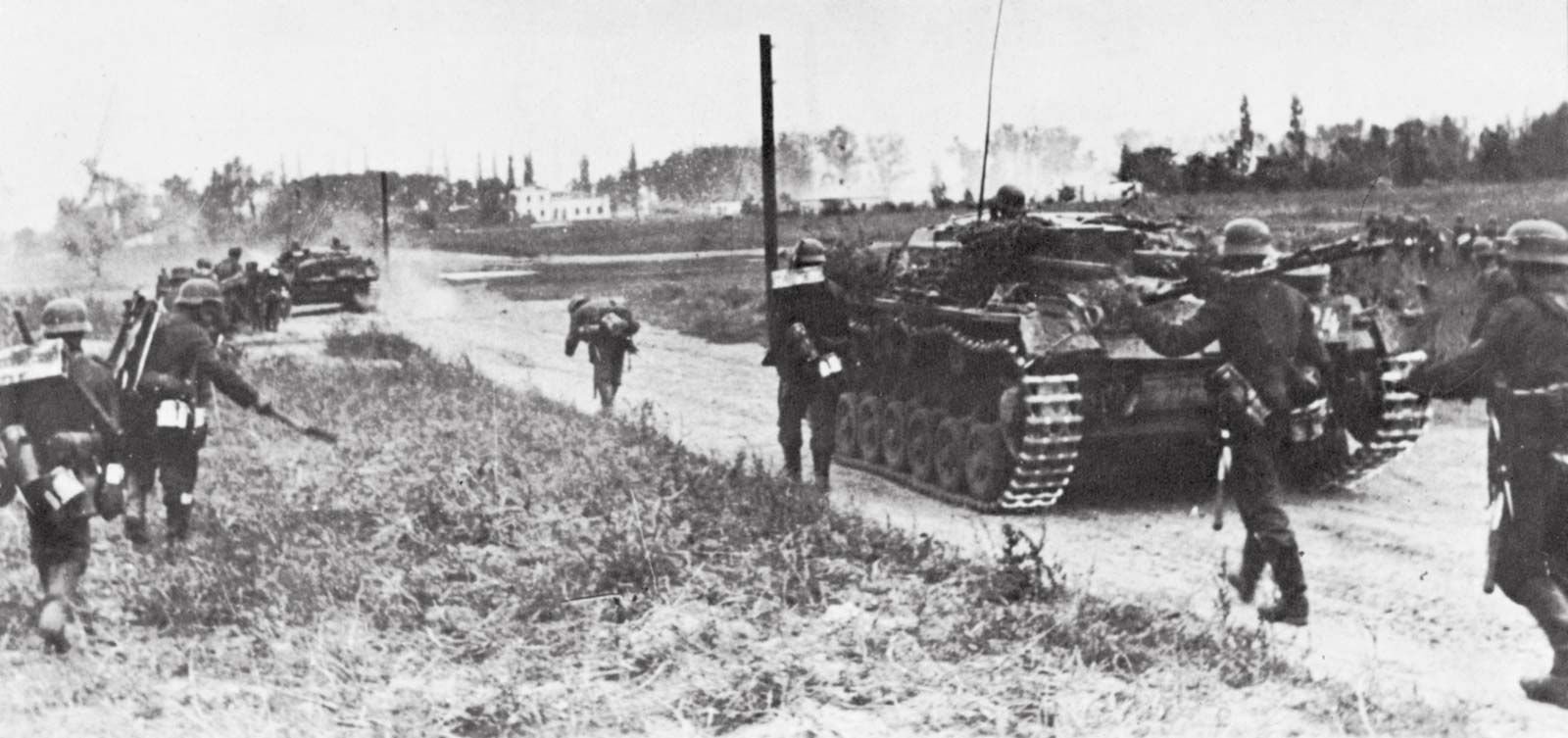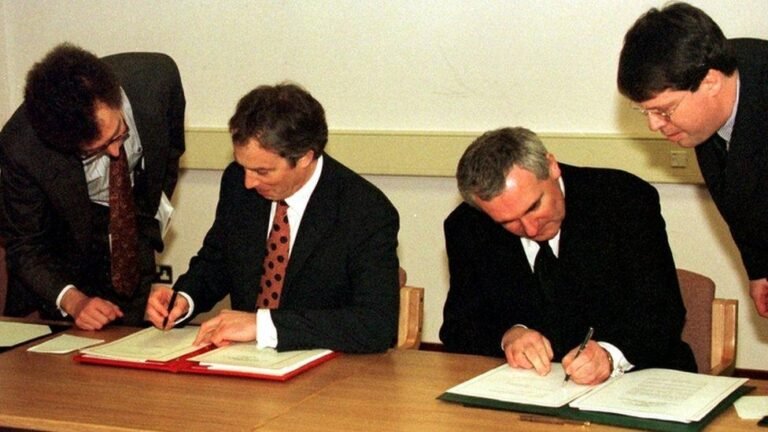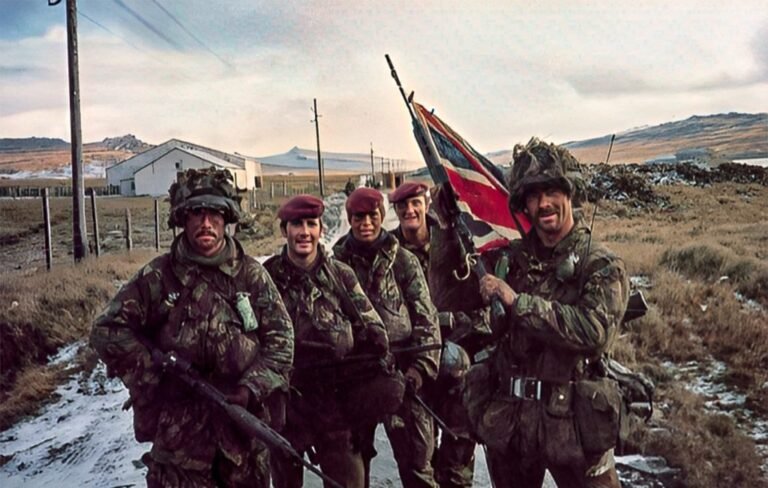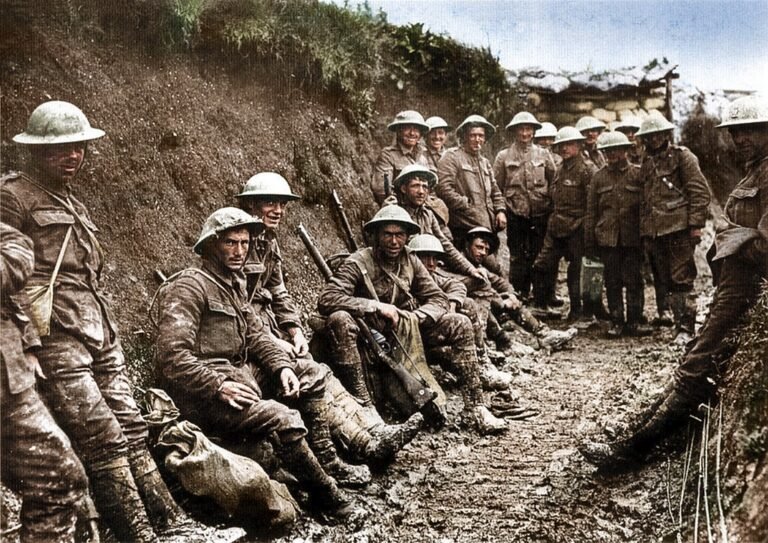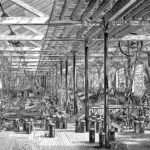World War II was a global conflict from 1939 to 1945. It involved over 30 countries and reshaped the world.
This war was not just about battles; it was about survival, alliances, and changing powers. Countries joined forces to fight against aggression and tyranny. The war impacted millions of lives, creating heroes and tragedies. Its effects are still felt today, influencing politics, culture, and technology.
Understanding World War II is crucial because it teaches lessons about peace and conflict. It shows the importance of diplomacy and cooperation. As we explore this topic, we uncover stories of courage, sacrifice, and resilience. These stories remind us of the past and guide us toward a better future. Join us as we delve into this pivotal period in history.
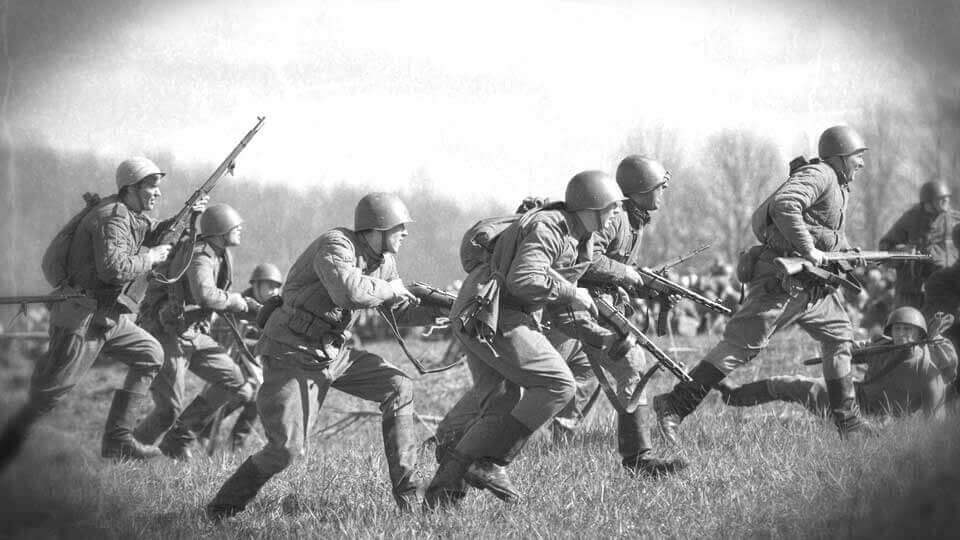
Credit: www.nelson.edu
Causes Of World War II
World War II, a global conflict from 1939 to 1945, had deep-rooted causes. Understanding these causes helps us learn from history. The causes of World War II are often divided into political tensions and economic factors.
Political Tensions
Political tensions played a big role in causing World War II. After World War I, many countries were unhappy with the Treaty of Versailles. Germany felt humiliated and sought revenge. Adolf Hitler rose to power by promising to restore Germany’s pride. He wanted to expand Germany’s territory. This led to conflicts with other nations.
In Italy, Benito Mussolini aimed to rebuild the Roman Empire. Japan also wanted to expand its empire in Asia. These ambitions created a hostile environment. Many nations started forming alliances. These alliances increased distrust and fear. The League of Nations, meant to keep peace, failed to stop aggressive actions.
Economic Factors
Economic factors also contributed to the outbreak of World War II. The Great Depression affected many countries in the 1930s. Unemployment rates were high, and economies were struggling. Many people lost faith in their governments. They supported leaders who promised change, like Hitler and Mussolini.
Countries started to adopt aggressive economic policies. Germany, Italy, and Japan sought resources and markets. They invaded other countries to secure these resources. This aggression led to conflicts with other nations. Economic instability made countries more willing to go to war.

Credit: americanindian.si.edu
Major Battles And Campaigns
World War II featured significant battles like the Battle of Stalingrad and Normandy’s D-Day invasion. These events shaped the global conflict and involved massive military campaigns across Europe and the Pacific. Understanding these battles highlights the bravery and strategy that defined this historic period.
World War II was shaped by several significant battles and campaigns. These events altered the course of history. They demonstrated the intense struggle between the Axis and Allied powers. Here are two major battles that stand out.
Battle Of Stalingrad
The Battle of Stalingrad was a turning point in World War II. It lasted from August 1942 to February 1943. This battle was fought in the city of Stalingrad, now known as Volgograd. It saw fierce combat between the German and Soviet armies. The battle was marked by brutal urban warfare. Soldiers fought street by street, building by building.
The Soviet Union achieved a decisive victory. This was a major blow to Nazi Germany. The German army suffered heavy losses. They were forced to retreat from the Eastern Front. The victory boosted Soviet morale. It marked the beginning of the end for Nazi Germany.
D-Day Invasion
The D-Day Invasion occurred on June 6, 1944. Allied forces landed on the beaches of Normandy, France. This operation was codenamed Operation Overlord. It was one of the largest amphibious military assaults in history. The invasion involved American, British, and Canadian troops.
The success of D-Day was crucial. It led to the liberation of France from Nazi occupation. The invasion opened a new front against Germany. It forced the Germans to fight on two fronts. This stretched their resources thin. The victory on D-Day paved the way for the Allies to advance into Europe. It hastened the end of World War II.
Notable Figures
World War II saw leaders like Winston Churchill, Franklin D. Roosevelt, and Adolf Hitler shape global events. Military figures such as Dwight D. Eisenhower and Erwin Rommel played crucial roles in strategic battles. Their decisions and actions left lasting impacts on history.
World War II was a time of intense conflict and transformation, marked by the actions of numerous influential individuals. These notable figures were not just leaders, but also symbols of their nations and ideologies. Understanding their roles provides a deeper insight into the complexities of the war. You’ll learn about how their decisions shaped history and their legacies that continue to be discussed today.
Winston Churchill
Winston Churchill was the prime minister of the United Kingdom during most of World War II. Known for his resolute spirit and powerful speeches, he inspired the British people during some of their darkest hours. His famous line, “We shall fight on the beaches,” still echoes as a testament to his determination.
Churchill’s leadership style was direct and motivational. He believed in keeping morale high and often visited bombed areas to support his people. His ability to rally the nation was crucial in maintaining British resistance against Nazi Germany.
On a personal note, reading Churchill’s speeches can feel like a pep talk from a trusted mentor. They remind us that strong words can inspire courage and resilience in times of adversity.
Adolf Hitler
Adolf Hitler, the dictator of Nazi Germany, was one of the most infamous figures of World War II. His aggressive expansionist policies led to the outbreak of the war in 1939. Under his regime, the horrific Holocaust took place, resulting in the loss of millions of lives.
Hitler’s rise to power was marked by charismatic oratory and propaganda. He manipulated public opinion and used fear to maintain control. His leadership was characterized by extreme ideology and ruthless tactics.
Reflecting on Hitler’s impact raises important questions about the dangers of unchecked power. It’s a stark reminder of the importance of vigilance and the protection of democratic values to prevent such tragedies.
As you consider these figures, think about the enduring lessons their actions teach us. How do leaders shape the course of history? What can we learn from their successes and failures? Understanding their stories might help us make better choices for the future.
Hidden Stories
World War II is full of hidden stories. Beneath the battles and strategies, there are tales of courage and intelligence. Many stories remained untold for years. These stories reveal the bravery of unknown heroes. They also highlight secret missions that changed the course of the war. Dive into these hidden stories. Discover the unsung heroes and covert operations that shaped history.
Unsung Heroes
Many heroes of World War II went unrecognized. These individuals made significant contributions. Some were soldiers on the front lines. Others worked behind the scenes. Take, for example, the women codebreakers. Their work was crucial in deciphering enemy communications. They worked tirelessly, often without recognition. Their efforts saved countless lives.
Another group of unsung heroes was the resistance fighters. They risked everything for freedom. Operating in occupied territories, they disrupted enemy plans. Their bravery and dedication inspired many. Yet, their stories are seldom told. These unsung heroes played a vital role in the war’s outcome.
Covert Operations
World War II was full of covert operations. Secret missions were crucial. They often turned the tide of battle. One such operation was Operation Mincemeat. It involved tricking the enemy with false information. A fake document was planted on a corpse. This misled enemy forces and changed their plans.
Another famous operation was the Enigma project. The Allies needed to crack the enemy’s code. Brilliant minds worked in secret to achieve this. The success of this operation gave the Allies a huge advantage. These covert operations were instrumental in winning the war. They demonstrated the power of intelligence and strategy.
Resistance Movements
During World War II, many brave individuals and groups stood up against tyranny. These resistance movements fought against the Axis powers. They risked their lives for freedom. Their efforts were crucial in the fight against oppression.
French Resistance
The French Resistance was a key player in World War II. It consisted of many brave men and women. They worked in secret to fight the German occupation and used guerilla tactics and sabotage. They disrupted German supply lines and communications. Their efforts helped the Allies in many ways. They gathered vital intelligence. They also helped downed Allied pilots escape. The French Resistance showed great courage and determination.
Partisan Fighters
Partisan fighters were active in many countries. They played a crucial role in the resistance. In Eastern Europe, partisans fought against the German army. They hid in forests and mountains. They launched surprise attacks on enemy forces. Their knowledge of the terrain gave them an advantage. In Italy and Yugoslavia, partisans were very effective. They attacked German troops and supply convoys. Their bravery inspired others to join the fight. Partisan fighters were relentless in their pursuit of freedom.
Impact On Civilians
World War II deeply affected civilians worldwide. Many faced displacement, shortages, and fear daily. The war’s aftermath reshaped societies and left lasting scars.
World War II altered countless civilian lives across the globe. The war’s reach extended beyond battlefields, affecting everyday life. Civilians faced dire challenges, with survival often uncertain. The realities of war caused profound and lasting impacts.
Life In Occupied Territories
In occupied territories, life changed overnight. People lived under constant fear and oppression. Local resources were often seized by occupying forces. This led to shortages of food and essential goods. Civilians had to adapt to new rules and restrictions. Many faced forced labor and harsh punishments. Families were often separated, causing heartbreak and loss.
Refugee Crisis
The war triggered a massive refugee crisis. Millions fled their homes seeking safety. Displacement became a harsh reality for many. Refugees faced perilous journeys and uncertain futures. Camps were overcrowded with limited resources. People struggled with food, water, and shelter shortages. Communities often welcomed refugees but resources were scarce. The emotional toll was immense, with families torn apart.
Technological Advancements
World War II spurred rapid technological progress across the globe. Nations raced to outsmart each other. They aimed to gain the upper hand on the battlefield. This era saw innovations that shaped modern warfare and technology. The advancements from this period changed the world forever.
Weapons Development
The war drove significant developments in weapons technology. Tanks became faster and more powerful. Armored vehicles played a crucial role in ground battles. The development of fighter jets altered air combat tactics. These aircraft were faster and more agile than ever before. The introduction of radar improved navigation and targeting. It gave forces a strategic edge during battles.
Submarines also saw major improvements. They could now travel silently across vast distances. This made them formidable opponents in naval warfare. Perhaps the most impactful innovation was the atomic bomb. Its creation marked a turning point in military history. The power of these weapons was immense and terrifying.
Cryptography
Cryptography became a vital tool during World War II. Nations relied on codes to protect their communications. Breaking these codes was crucial to gaining intelligence. The Enigma machine was a key focus for cryptographers. It encrypted messages for the German military. Allied forces worked tirelessly to crack it.
Their success in breaking Enigma was a turning point. It gave the Allies access to vital information. Alan Turing played a crucial role in this achievement. His work laid the groundwork for modern computing. Cryptography’s importance in the war set the stage for its future. Today, it remains essential in digital security.

Credit: www.history.com
Post-war Reconstruction
The end of World War II marked a time of rebuilding and recovery. Countries devastated by war needed to rebuild their economies and infrastructures. This period is known as post-war reconstruction. It involved massive efforts to restore stability and prosperity. Two key aspects of this period were the Marshall Plan and the War Crime Trials.
Marshall Plan
The Marshall Plan was a major part of post-war reconstruction. Named after U.S. Secretary of State George Marshall, it aimed to rebuild Europe. The United States provided over $12 billion in aid. This help was crucial for war-torn countries. It funded the rebuilding of cities, industries, and infrastructure. The plan also aimed to prevent the spread of communism. It promoted economic cooperation and modernization. The Marshall Plan was a success. It helped Europe recover quickly.
War Crime Trials
The War Crime Trials were another key aspect. They aimed to bring justice to those responsible for wartime atrocities. The most famous of these trials were the Nuremberg Trials. Leaders of Nazi Germany were held accountable. They faced charges of crimes against humanity. These trials set important legal precedents. They established that individuals could be held responsible for war crimes. The trials also aimed to provide a sense of closure for the victims. They were a significant step toward international justice.
FAQs
What Started World War II And Why?
World War II began when Germany invaded Poland on September 1, 1939. The invasion triggered global conflict due to aggressive expansion by Axis powers. Britain and France declared war on Germany, aiming to stop its territorial expansion. The war escalated, involving numerous countries and resulting in significant geopolitical changes.
Who Was The World War II Fought Between?
World War II was fought between the Allies and the Axis powers. The Allies included the United States, Soviet Union, United Kingdom, and China. The Axis powers consisted of Germany, Italy, and Japan. The war lasted from 1939 to 1945.
Was WWII The Worst War In History?
World War II is considered one of the most devastating wars in history due to its global impact. It caused immense human suffering, with millions of casualties and widespread destruction. The war reshaped geopolitics, leading to significant changes worldwide. Its extensive reach and consequences make it a pivotal event in human history.
What Country Has The Most Deaths In World War II?
The Soviet Union suffered the most deaths in World War II. Approximately 27 million Soviet citizens died during the conflict. This includes both military personnel and civilians. The immense loss profoundly impacted the country’s post-war recovery and development.
Conclusion
World War II reshaped the world in many ways. It affected millions of lives. Countries faced great challenges and changes. Lessons learned continue to guide us today. The war showed the importance of peace and unity. Many brave individuals sacrificed for freedom.
Their stories inspire future generations. Understanding history helps prevent future conflicts. Reflection on these events is crucial. It reminds us of the cost of war. Let’s strive for a peaceful future together. Remembering the past helps build a better tomorrow.

